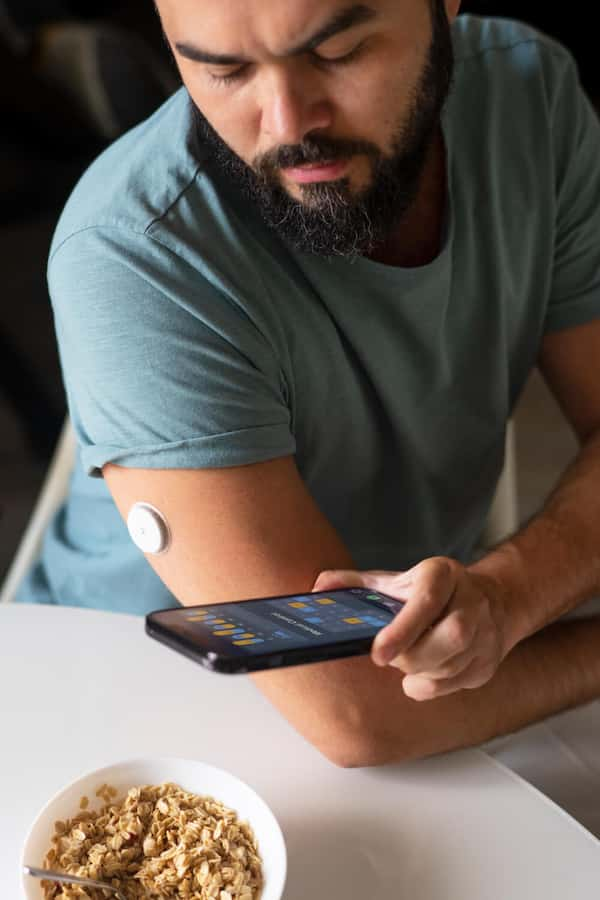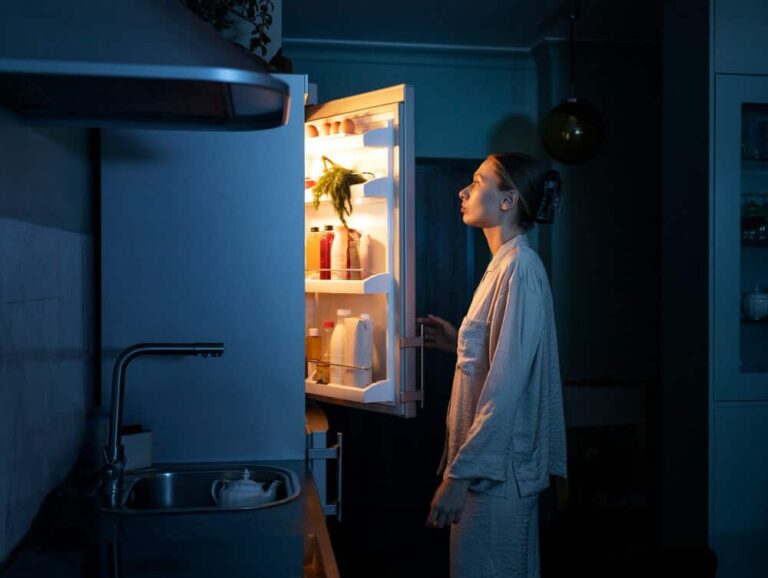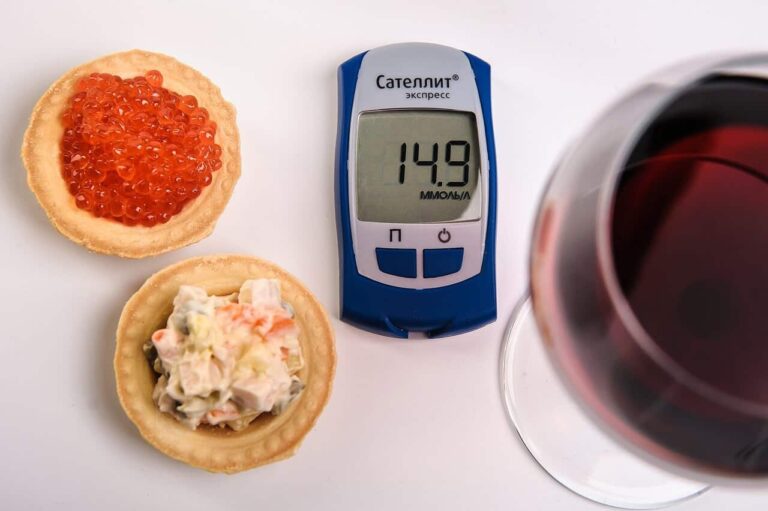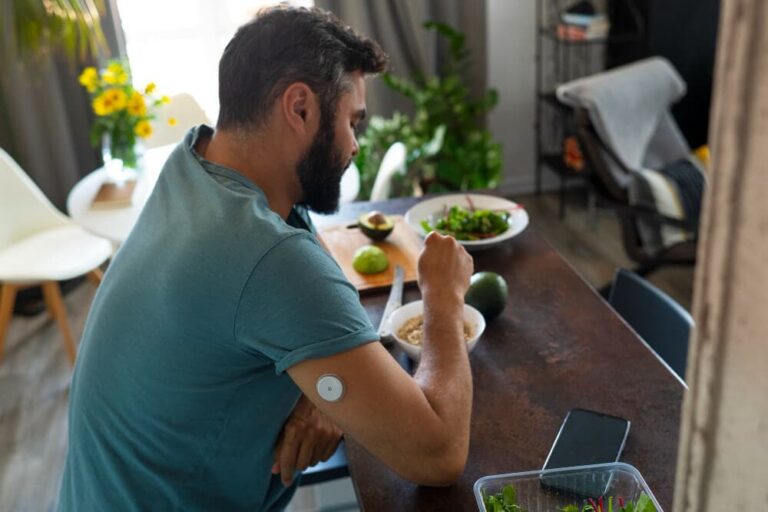You’d think a blood sugar of 45 mg/dL (2.5 mmol/L) would set off every alarm bell in your brain. A five-alarm fire. A full-scale neurological meltdown. But there I was, calmly typing at my desk, feeling completely fine. Not a single tremble, not a drop of sweat. It wasn’t until I stood up to get a glass of water that my body’s secret finally came out. The world went sideways, and I hit the floor.
Welcome to the terrifying, disorienting world of hypoglycemia unawareness.
It’s one of the most sinister villains in the Type 1 Diabetes universe. It doesn’t announce its arrival. It just… happens. One year, you’re catching lows at 75 mg/dL with the classic shaky hands. The next, your body just silently shrugs as you cruise past 50, completely oblivious. It feels like the one safety net you had has been cut, leaving you in a freefall without a parachute.
But here’s the kicker, the one piece of brilliant, shining hope in this scary story: It is not a life sentence. You can retrain your body. You can get your alarm system back online. Seriously.
Disclaimer: You know the drill. I’m not a doctor, just a seasoned pancreas-impersonator. This is my story and my research, not medical advice. Severe hypoglycemia is serious business. Please, please talk to your endo about creating a safe plan for yourself.
What is Hypoglycemia Unawareness, Really? The Broken Fire Alarm Analogy
Think of your body’s response to a low blood sugar as a sophisticated fire alarm system. Normally, when it detects the “smoke” of a dipping glucose level, it pulls the alarm. This triggers a flood of adrenaline and other stress hormones, creating those familiar, life-saving symptoms:
- The shaky hands
- The sudden, cold sweat
- The pounding heart
- The irrational “low rage” or sudden irritability
- The intense, desperate hunger
These aren’t just annoying side effects; they are your body screaming, “PAY ATTENTION! FEED ME! DANGER!”
Hypoglycemia unawareness is what happens when that fire alarm system breaks. After experiencing frequent or severe lows, your brain essentially gets desensitized. It’s like it gets tired of the “false alarms” and decides to stop ringing the bell so loudly. The threshold for triggering symptoms drops lower and lower, until one day, it doesn’t ring at all.
The Crippling Fear: Why This is More Than Just a Number
Losing your hypo awareness isn’t just a medical inconvenience; it’s a profound psychological blow. It fundamentally erodes the trust you have in your own body. You start to feel like a ticking time bomb.
The fear manifests in a thousand different ways:
- Fear of Driving: “What if I go low on the highway and don’t notice?”
- Fear of Sleeping: “Will I wake up from a nighttime low, or will this be the one I sleep through?”
- Fear of Being Alone: The constant need to have someone around “just in case.”
- The Burden on Loved Ones: The guilt of making your partner or family your designated “hypo-watchers.”
This fear forces you into a defensive crouch. You start running your blood sugars intentionally high, just to create a buffer. You avoid exercise. You become afraid of the very insulin that keeps you alive. It’s an exhausting, isolating way to live.
The Counterintuitive Cure: The “Hypo Reset” Strategy
So, how do you fix a broken alarm? You have to give it a break. You have to let the system reset. The strategy, backed by decades of research from pioneers like Dr. Philip Cryer, is shockingly simple in theory, but challenging in practice:
You must meticulously avoid all hypoglycemia—even mild lows—for a period of 2 to 3 weeks.
That’s it. That’s the “magic.” By giving your brain a vacation from low blood sugar, you allow it to become sensitive again. You re-calibrate the alarm system so it starts ringing at a safer, higher threshold (like 70 or 75 mg/dL) instead of a dangerous one (like 45 mg/dL).
It sounds impossible, right? “Just avoid lows.” But it can be done. Here’s the exact game plan I used.
My “Hypo Reset” Game Plan: A Step-by-Step Guide
I treated this like a critical mission. For three weeks, my number one priority wasn’t a perfect A1C; it was safety.
1. I Raised My Red Line (And Fired My Inner Perfectionist)
This was the hardest mental shift. The “good diabetic” in me screamed at the thought of anything over 130. But I had to tell that voice to take a hike.
- The Goal: Instead of aiming for a tight range of 80-120 mg/dL, I aimed for a “safety first” range of 100-180 mg/dL.
- The Mindset: A blood sugar of 160 was not a failure; it was a success because it wasn’t 60. This temporary shift was a strategic retreat to win the war.
2. I Became a CGM Cyborg (And Used Every Alert)
My Continuous Glucose Monitor (CGM) went from being a data tool to my literal lifeline.
- The “Urgent Low Soon” Alert: This is the most important alert you have. I set mine to go off when my BG was predicted to hit 75-80 mg/dL within 20 minutes. This gave me a head start to act before I was actually low.
- Trend Arrows are Your Crystal Ball: A reading of 120 with two arrows down is far more urgent than a reading of 90 with a straight arrow. I learned to treat the arrow, not just the number.
3. I Became a Data Detective, Not a Defendant
Every low is a clue. I stopped seeing them as personal failures and started seeing them as data points. I kept a simple log and asked:
- Why did this happen? Did I stack insulin doses? Did I misjudge the carbs in that meal? Was it a delayed drop from exercise 4 hours ago?
- Patterns emerged. I realized I was almost always dropping around 3 PM. Solution: a small, planned snack at 2:30 PM. I learned my “walk the dog” bolus was 30% too much. Solution: a reduced dose or temp basal.
4. I Assembled My “Hypo Watch” Team
I had a blunt conversation with my partner and a close coworker.
- The Script: “Hey, I’m working on regaining my hypo awareness, which means I might not feel my lows. If you notice me seeming ‘off’—confused, irritable, or just weird—please don’t be afraid to ask me to check my blood sugar. You won’t offend me; you’ll be keeping me safe.”
- This shared responsibility lifted a huge weight off my shoulders.
5. I Fortified My Nightstand
Nighttime lows were my biggest fear. My nightstand began to look like a diabetes supply depot.
- The Arsenal: Two juice boxes, a tube of glucose tabs, and my phone with the CGM app volume turned all the way up. Knowing it was all within arm’s reach helped me sleep more soundly.
The Verdict: The Slow, Sweet Return of the “Whisper”
Did it work? Yes. Absolutely, yes.
It wasn’t a sudden switch. But around the end of the second week, I was sitting at my desk and felt it—a faint, familiar flutter. A tiny bit of internal shakiness. I checked my sugar: 72 mg/dL. It wasn’t a screaming alarm, but it was a whisper. And that whisper was the most beautiful sound I had heard in years.
Over the next few weeks, the whispers got louder. I started trusting my body again. The constant, gnawing fear began to recede.
Final Thoughts: You Are Not Broken
If you’re living with hypoglycemia unawareness, hear this: You are not broken. Your body isn’t failing you; it has just adapted in a way that is no longer safe. But it is reversible.
Give yourself the grace to loosen the reins. Prioritize safety over perfection, even if it’s just for a few weeks. Lean on your technology, assemble your team, and listen for that first, faint whisper.
Because real control isn’t about a perfect A1C. It’s about having the awareness to act before it’s too late. It’s about getting your safety net back.











